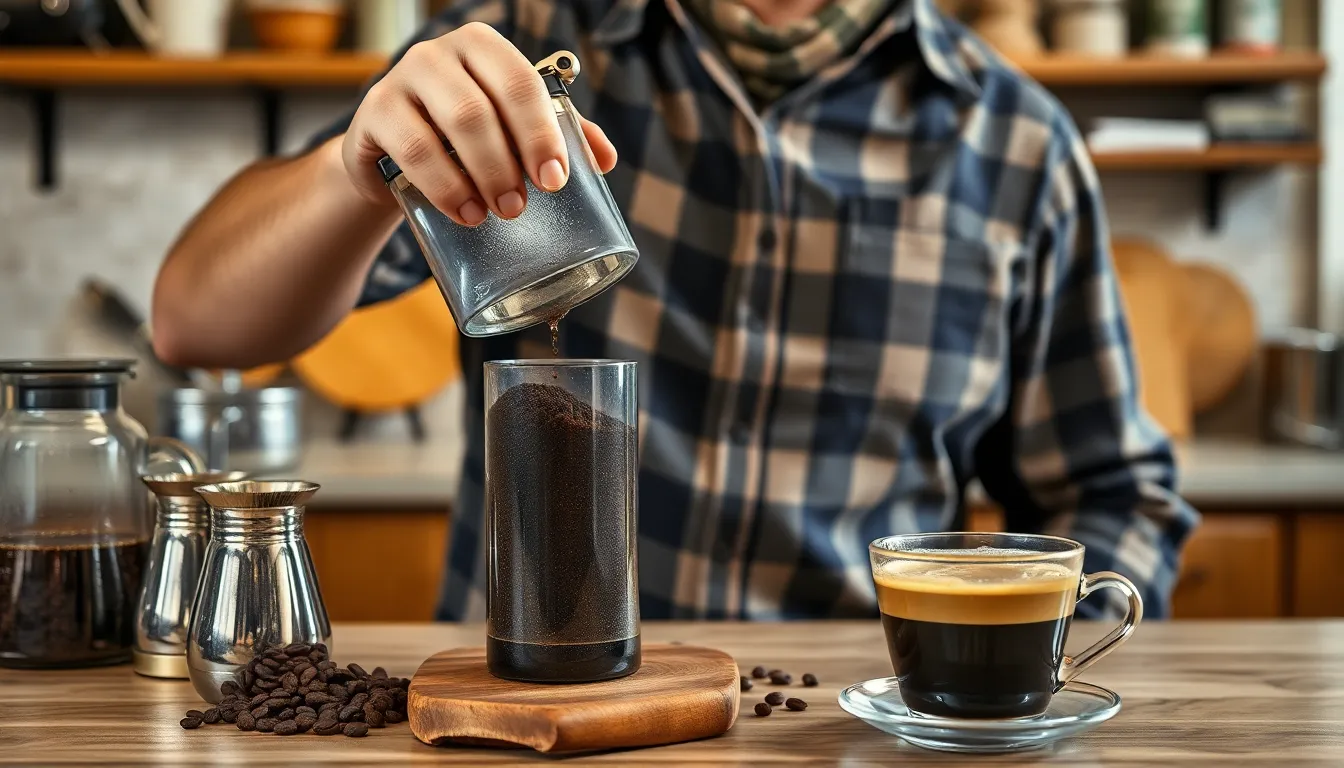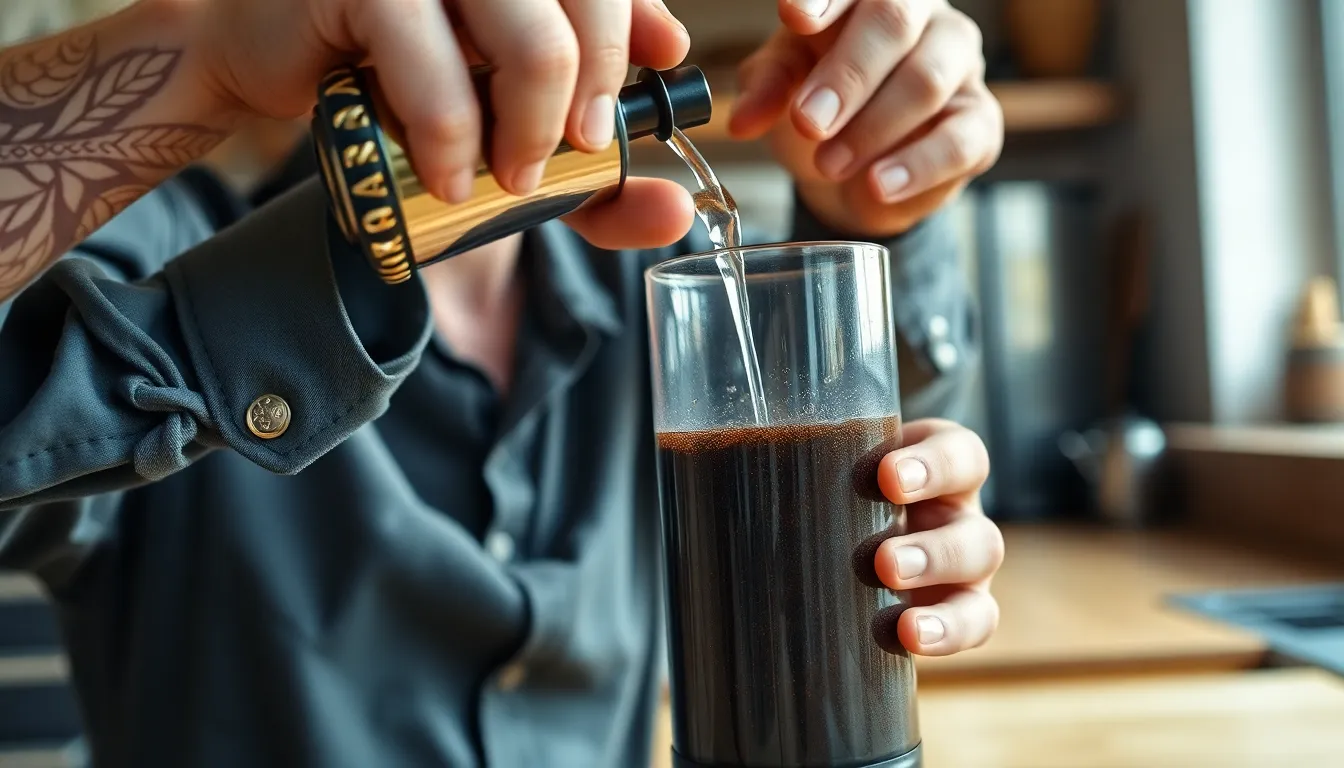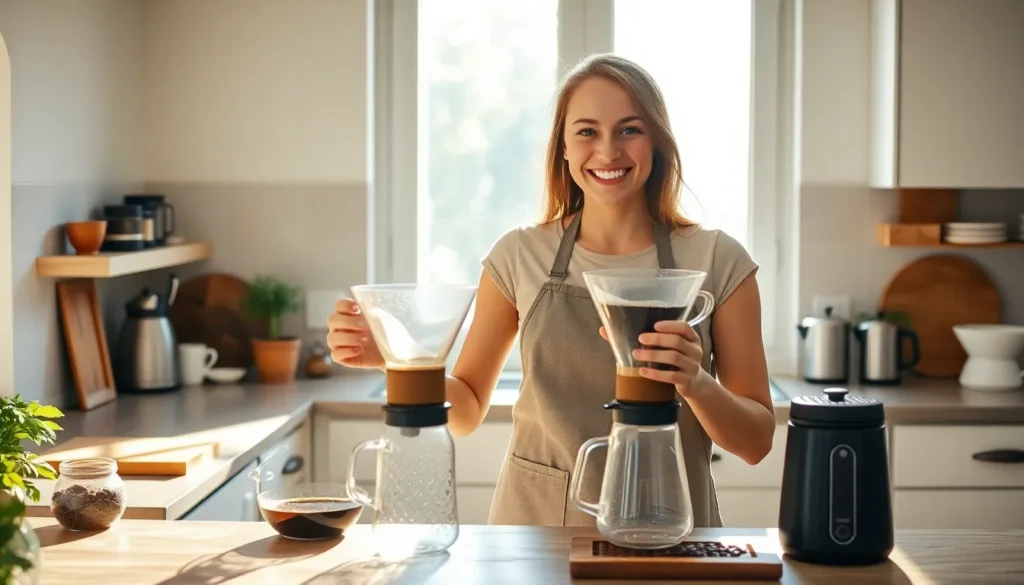For many, coffee is more than just a morning ritual; it’s a passion. With the rise of specialty coffee culture, enthusiasts are eager to learn the art of brewing the perfect cup. From mastering the espresso machine to exploring various brewing methods, coffee tutorials offer a wealth of knowledge for beginners and seasoned baristas alike.
These tutorials break down complex techniques into simple steps, making it easy for anyone to elevate their coffee game. Whether it’s understanding the nuances of grind size or perfecting latte art, there’s always something new to discover. As coffee lovers dive into these resources, they unlock the secrets behind their favorite brews, transforming their daily cup into a delightful experience.
Table of Contents
ToggleOverview of Coffee Tutorials
Coffee tutorials cater to the rising number of coffee enthusiasts, enriching their brewing skills and deepening their appreciation for this beverage. They serve as essential resources for understanding various brewing methods and techniques.
Importance of Coffee Tutorials
Coffee tutorials clarify complex brewing techniques, making them approachable for everyone from beginners to experienced baristas. They enhance knowledge of essential brewing components, including flavor profiles and grind size. By engaging with these tutorials, coffee lovers improve their skills, creating refined beverages that elevate their coffee experience.
Types of Coffee Tutorials
- Video Tutorials: These offer visual guidance on techniques such as pour-over and espresso preparation, allowing viewers to follow along step by step.
- Written Guides: Detailed articles provide in-depth discussions on brewing methods, equipment recommendations, and troubleshooting tips.
- Workshops: Hands-on classes led by expert baristas focus on practical skills and offer direct feedback, often culminating in personalized tips.
- Webinars: Live online sessions allow participants to interact with instructors, posing questions while learning new techniques or methods in real time.
- Social Media Posts: Short, engaging tips shared across platforms highlight quick techniques or fun facts, appealing to a broad audience.
Popular Brewing Methods


Coffee enthusiasts often explore various brewing methods to enhance their coffee experience. Each method has unique characteristics that influence flavor and aroma.
French Press
French Press offers a full-bodied coffee experience. Coarse ground coffee steeped in hot water for four minutes results in a rich brew with a robust flavor profile. Users should use a coffee-to-water ratio of 1:15 for optimal extraction. French Press allows essential oils to remain in the coffee, enhancing its texture. To brew, add coffee grounds to the press, pour hot water, stir gently, and let steep before pressing down the plunger.
Pour Over
Pour Over delivers precise control over brewing parameters. This method utilizes a cone-shaped filter where hot water cascades evenly over coffee grounds. A common ratio is 1:16 coffee to water. The pour over process allows for various techniques, including blooming and spiral pouring, which enhances flavor clarity. Users should start by adding coffee grounds to the filter, then pour hot water in a slow, circular motion, allowing it to brew for around three to five minutes.
Espresso
Espresso is known for its concentrated flavor and rich crema. Finely ground coffee is packed tightly and brewed under high pressure, typically reaching 9 bars. A standard espresso shot uses 18-20 grams of coffee and takes about 25-30 seconds to brew. This method produces a small, potent shot ideal for various coffee drinks. To prepare, users should tamp the coffee evenly, place the portafilter in the machine, and initiate the brewing cycle for a perfect espresso extraction.
Equipment Needed for Coffee Tutorials
Having the right equipment is crucial for mastering coffee brewing techniques. This section outlines essential tools that enhance the coffee-making process and ensure optimal results.
Coffee Makers
Coffee makers come in various types, each suited for different brewing methods. Popular options include:
- French Press: Produces a rich, full-bodied coffee, ideal for those who enjoy a robust flavor.
- Pour Over: Allows for precise control over water flow, enhancing flavor clarity.
- Espresso Machine: Creates concentrated coffee shots with rich crema, perfect for espresso lovers.
- Aeropress: Offers versatility and portability, making it great for rich coffee in less than a minute.
Selecting the right coffee maker depends on personal preferences and desired outcomes.
Grinders
Grinders play a significant role in achieving the perfect coffee. Key points to consider include:
- Burr Grinders: Provide consistent grind size, which is vital for flavor extraction.
- Blade Grinders: Suitable for quick grinding but can produce uneven particle sizes.
- Adjustable Grinders: Allow customization for different brewing methods, ensuring optimal extraction.
Choosing a grinder that matches the brewing technique enhances the overall coffee experience.
Other Essential Tools
Several additional tools are necessary for smooth coffee brewing processes. Important items include:
- Kettle: A gooseneck kettle provides control over pour rate and direction, crucial for methods like Pour Over.
- Scale: A digital scale ensures accurate coffee-to-water ratios, which is key for consistency.
- Tamper: Essential for espresso preparation, a tamper compresses coffee grounds for uniform extraction.
- Milk Frother: Useful for creating frothed milk for lattes and cappuccinos, enhancing coffee beverages.
These tools not only simplify techniques but also elevate the overall quality of brewed coffee.
Tips for Successful Coffee Tutorials
Successful coffee tutorials enhance the brewing experience and ensures users master the techniques involved. Adhering to the following tips fosters better understanding and execution of coffee-making processes.
Measuring Coffee and Water
Measuring coffee and water accurately is crucial for maintaining consistency and achieving optimal flavor.
- Coffee-to-Water Ratio: Stick to a standard ratio of 1:15 for drip coffee and 1:2 for espresso. Adjust these ratios according to personal preferences for strength.
- Use a Scale: Utilize a digital scale for precise measurements. This helps users replicate the same brew quality each time.
- Measure Grainds: Remember to measure coffee grounds before grinding. This ensures the correct amount, as the grind size affects flavor extraction.
Water Temperature and Brewing Time
Water temperature and brewing time play a significant role in flavor extraction during coffee brewing.
- Ideal Water Temperature: Maintain a water temperature between 195°F and 205°F for optimal extraction. Too hot or too cold water can lead to under-extraction or over-extraction, impacting flavor.
- Brewing Time Guidelines: Follow specific brewing times depending on the method:
- French Press: Steep for 4 minutes.
- Pour Over: Brew for 3–4 minutes.
- Espresso: Aim for a shot duration of 25–30 seconds.
- Adjust Based on Taste: Experiment with brewing times for personal taste. Longer steeping often produces bolder flavors, while shorter times yield a milder drink.
Conclusion
Exploring coffee tutorials opens up a world of flavors and techniques for enthusiasts at any skill level. By mastering various brewing methods and understanding essential equipment, coffee lovers can transform their daily ritual into an extraordinary experience.
With the right resources and guidance, anyone can elevate their coffee game and appreciate the nuances that each cup offers. Embracing these tutorials not only enhances brewing skills but also fosters a deeper connection to the craft of coffee-making. As passion for specialty coffee continues to grow, the journey of discovery and mastery is just beginning for many.





